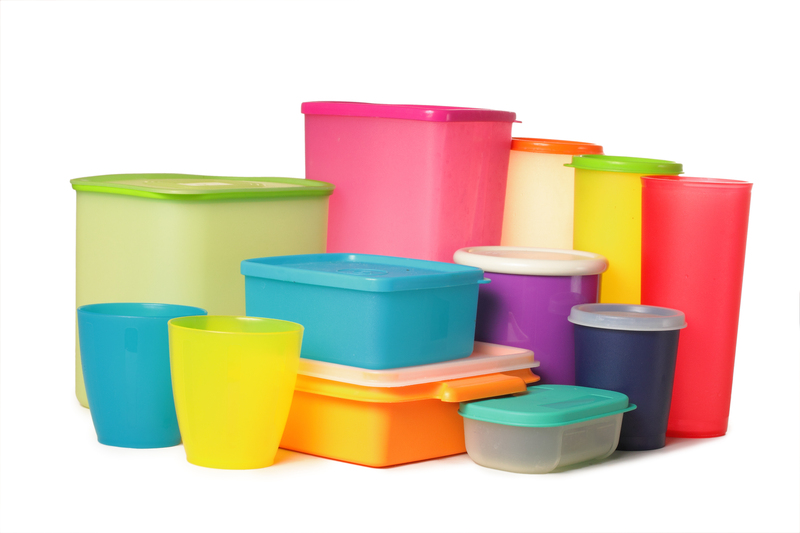Microplastic Menace: Can We Put a Stop to It?
Microplastics have infiltrated every corner of our planet, from the summit of Mount Everest to the depths of the Mariana Trench. These minuscule contaminants, less than 5mm in size, have sparked international concern. The urgent question now is--can we put a stop to the microplastic menace?
What Are Microplastics?
Microplastics are tiny fragments or particles of plastic, generally defined as being smaller than five millimeters. They originate either as primary microplastics (manufactured at this size, such as microbeads in cosmetics) or as secondary microplastics (created by the breakdown of larger plastic items). These persistent pollutants are alarmingly pervasive in our environment.
Categories of Microplastics
- Primary microplastics: Intentionally produced small plastics (e.g., exfoliating beads).
- Secondary microplastics: Result from weathering and degradation of larger plastic debris.

Why Are Microplastics So Dangerous?
Microplastics are not just an aesthetic blight. They pose significant threats to wildlife, ecosystems, and human health. Here's why the microplastic threat demands urgent attention:
Effects on Marine and Terrestrial Life
- Ingestion risk: Marine organisms, from plankton to whales, inadvertently consume microplastics. This leads to malnutrition, internal injuries, and sometimes death.
- Bioaccumulation: As microplastics move up the food chain, their concentration increases, potentially impacting all levels of the ecosystem.
- Toxins: Plastics may absorb harmful pollutants like pesticides or heavy metals, which then enter the bodies of animals and, ultimately, humans.
Consequences for Human Health
The infiltration of tiny plastic particles into our food, air, and water has alarming implications:
- Food and water contamination: Studies have detected microplastics in seafood, table salt, bottled water, and even beer.
- Potential toxicity: While research is ongoing, microplastics may cause inflammation, disrupt hormonal functions, and enable the transfer of toxic substances in the human body.
- Inhalation risk: Microplastics suspended in air can be inhaled, potentially leading to respiratory issues.
Sources of Microplastic Pollution
The global scale of microplastic contamination can seem overwhelming, but understanding the sources is crucial for developing solutions. Here are the main contributors:
- Textiles: Washing synthetic fabrics like polyester and nylon releases microfibers into waterways.
- Tires: Abrasion of car tires sheds synthetic rubber particles onto roads, which are eventually washed into drains and rivers.
- Personal care products: Microbeads in facial scrubs, toothpaste, and cosmetics are also culprits (although many countries are now banning these).
- Paints and coatings: Weathering of paints on ships, infrastructure, and road markings releases plastic fragments.
- Degrading plastic waste: Littered plastic bags, bottles, and packaging break down into secondary microplastics over time.
Emerging Microplastic Hotspots
- Urban runoff: Stormwater can carry large quantities of microplastics from city streets into local waterways.
- Wastewater treatment plants: While these facilities filter out many contaminants, microplastics often slip through and end up in rivers or oceans.
- Agricultural runoff: The application of sewage sludge as fertilizer can introduce microplastics into soil and food crops.
How Do Microplastics Travel?
The journey of microplastics is not limited to waterways. Their small size and light weight mean they can become airborne, traveling across continents and re-entering the ecosystem through rain and snow. As a truly global pollutant, tackling microplastic threats requires international coordination.
Can We Stop the Microplastic Menace?
Addressing the microplastic crisis is a monumental challenge, but innovative approaches are emerging. Can we truly halt the spread of microplastics, or do we have to accept them as a permanent part of our environment? Let's evaluate the most promising strategies.
1. Reducing Plastic Production and Consumption
- Banning single-use plastics: Many nations are enacting bans or levies on plastic bags, straws, and cutlery. While these measures reduce large plastic debris, they also lower the eventual production of microplastics.
- Encouraging reusable alternatives: Stainless steel, glass, bamboo, and cloth options for everyday goods help cut down microplastic generation.
- Eco-friendly design: Product and packaging designers are increasingly considering recyclability and compostability.
2. Innovations in Waste Management
- Advanced filtration technologies: New filters in washing machines can capture microfibers before they leave the appliance.
- Upgraded wastewater treatment: Municipal upgrades are starting to include stages specifically designed to trap microscale pollutants.
- Plastic-Eating micro-organisms: Scientists are exploring the use of bacteria and fungi that can degrade plastics, potentially breaking them down faster and more safely.
3. International Policy and Local Legislation
- Microbead bans: Dozens of countries have already outlawed microbeads in cosmetic products.
- Extended Producer Responsibility (EPR): Laws now require manufacturers to manage their products' end-of-life stage, motivating them to design better, less polluting products.
- Marine litter directives: The European Union and other coalitions have enacted strategies targeting marine pollution, with microplastics as a central concern.
4. Scientific Research and Monitoring
- Citizen science: Beach clean-up initiatives and water testing programs involve the public in data collection and awareness.
- Global mapping: Satellite and drone technologies help identify and map microplastic concentrations across oceans and built environments.
- Toxicology and exposure studies: Ongoing research aims to uncover the specific health risks posed by chronic microplastic exposure.
5. Changing Consumer Habits
- Choosing natural fibers: Opting for clothing made from cotton, wool, hemp, or linen reduces microfiber shed.
- Washing wisely: Washing clothes less frequently, at lower temperatures, and with gentler spin cycles keeps more microfibers out of the water.
- Supporting responsible brands: Consumers can drive positive change by supporting companies with transparent supply chains and genuine environmental commitments.
Are There Obstacles to Stopping Microplastic Pollution?
Despite positive developments, the war on microplastic contamination faces major hurdles:
- Sheer scale: Over 300 million tons of plastic are produced annually, making complete global containment daunting.
- Economic interests: The convenience and low cost of plastics make them hard to replace, especially in less wealthy societies.
- Lack of standardized regulations: Laws vary greatly among countries, hampering collective action.
- Knowledge gaps: We're only beginning to understand the movement and impacts of microplastics on health and the environment.
The Role of Technology in Battling Microplastics
Emerging tech holds considerable promise for stemming the microplastic tide. Some breakthroughs include:
- Microplastic capture devices: Inventors are developing ocean skimmers, river barriers, and washing machine filters specifically designed to trap microplastics.
- AI-driven pollution tracking: Artificial intelligence analyzes data from sensors and satellites to predict microplastic movements and hotspots.
- Biodegradable plastics: Compostable bioplastics made from algae, cornstarch, or fungi are being researched as replacements for persistent petroleum-based plastics.
- Chemical recycling: New processes are breaking plastics down on the molecular level, allowing more efficient and complete reuse.

What Can You Do?
While global policy and corporate responsibility are critical, individuals can play a real role in fighting the microplastic menace. Consider these actions:
- Reduce, reuse, and recycle: Cut back on single-use plastics; re-use containers, bags, and bottles; sort trash properly to enhance recycling.
- Laundry care: Use a Guppyfriend bag or filter when laundering synthetics to trap microfibers. Wash at lower temperatures to avoid fabric breakdown.
- Conscious purchasing: Avoid products containing microbeads and favor natural-fiber textiles and home goods.
- Community engagement: Volunteer for local clean-up events, pressure policymakers for stricter plastic regulation, and educate others.
Our Shared Responsibility for the Future
The microplastic threat is a consequence of modern convenience--but it's also a challenge we can overcome with innovation and commitment. Governments, scientists, industries, and citizens must work together to transform how we produce, consume, and dispose of plastics.
Can we put a stop to the microplastic menace? While a world entirely free from microplastics may be a distant goal, it is possible to drastically reduce plastic leakage with coordinated, comprehensive, and creative strategies. Each proactive step--from choosing better products to advocating for policy reform--reduces our burden on the planet and safeguards health.
The time to act is now. Our oceans, our food, our health, and future generations depend on our willingness to confront the microplastic menace head-on.
```